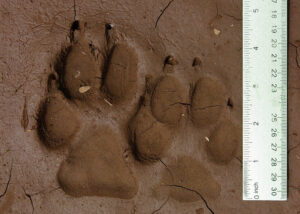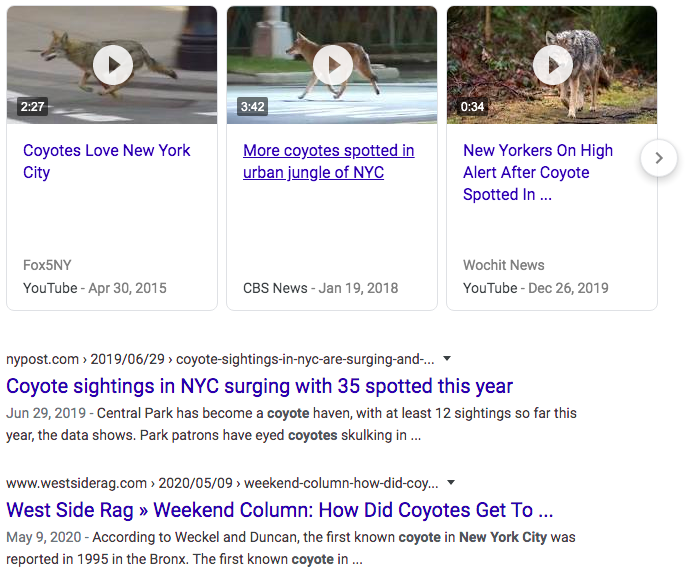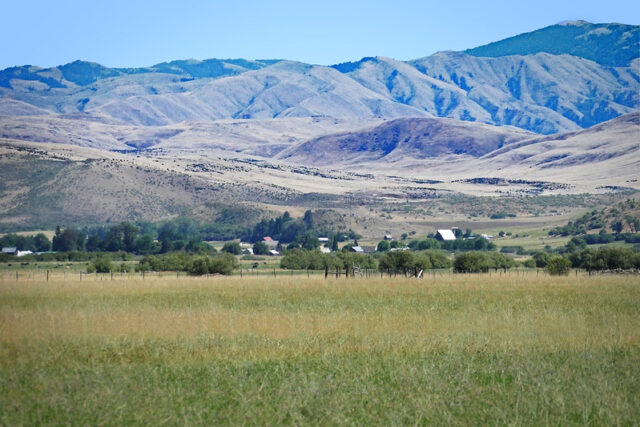Halfway, Oregon. Photo by JH Moyer, Shared using Creative Commons License

Photo by the Oregon Department of Fish and Wildlife.
Initially, my plan for this summer was to travel to rural Northeastern Oregon and conduct fieldwork for my thesis which was focused on modern-day human-wolf relationships. I was prepared to spend over three weeks camping and hiking to track the Pine Creek wolf pack who reside outside the town of Halfway, Oregon. My attempts to track the pack would be furthered by a diverse array of modern tools: by setting up motion-activated trail cameras, deploying a bioacoustic microphone to capture acoustic survey data of animal activity, and creating photogrammetry models (3D, photo-real computer models of objects) of what I found. In addition, I was also going to interview local community members about living next to wolves and sharing the landscape with them. Their interview responses would hopefully tie to the ecological data I was to collect, reflecting the nature of our relationship with wolves through artifacts of our mutual existence on shared land and with shared resources. I had prepared for this process both by studying wildlife tracking, exploring the theoretical frameworks of Actor-Network-Theory, Posthumanism, and Multispecies Ethnography, and by creating practice 3D models from my neighborhood in Brooklyn. If successfully executed, this summer research project was to provide the foundation for my MA thesis.
In March, as the first policies of restricted travel this summer were made, I made back-up plans for conducting remote research. No fieldwork on the land, just remote interviews and asking folks to take their own photos or video of what it meant to live with wolves. This plan was helpful to be able to refine and scale-down my fieldsite to a specific location through the input of local community members and wildlife experts. I’d just need to travel to Oregon in the fall once things were “better.” But this plan assumed my thesis research would continue to focus on wolves in Northeast Oregon. I think I made this assumption as I struggled to accept the true impact of how this virus would hinder my proposed research—let alone its impact on the health of my community, family, or myself. I assumed if I prepared more, creating protocols and contingency plans, that I could carefully navigate through the storm of a global virus. I subscribed to news updates for local papers and alerts from across Oregon and kept working.
But now, mid-June, the news reports of “second wave” infections across the country and the widespread lack of dedication to protective measures feels like the final nails are shutting the coffin for my proposed research. I’ve come to sit with this realization as it is unlikely I will be able to travel to Oregon (or anywhere else) in the next year. If I want to do this research, I will need to do it from my own home.
Feeling curious about a faint mention of a story I heard a long time ago, I googled “coyotes NYC” to see what turned up.

Turns out, there is quite a lot happening with coyotes in NYC—public reports, news stories, non-profit researchers, and city park officials trying to reassure the public that their dogs and children are safe. The story here and the story in Oregon are both vastly different and the same. While by no means are these the same animals, the story of humans sharing the landscape with wildlife remains consistent. If anything, the heart of my research—coexisting with others—is highlighted even more because it seems impossible that coyotes survive in such a densely urban area. What does it mean to share the Lenape land that we call New York City, the Bronx, or Manhattan, with wild animals? What supports coyotes living here? Could we further support coyotes living in NYC and how would that also benefit us humans?
I’ve started to identify new interview subjects, new strategies for research that are based upon my abandoned research proposals, and new goals for this summer. I’m looking forward to exploring the city I now call home and look forward to getting on my bike to start trying to see some coyote presence myself! If any of you readers want to be in touch to make recommendations or referrals, please let me know at jay.simpson@nyu.edu.
